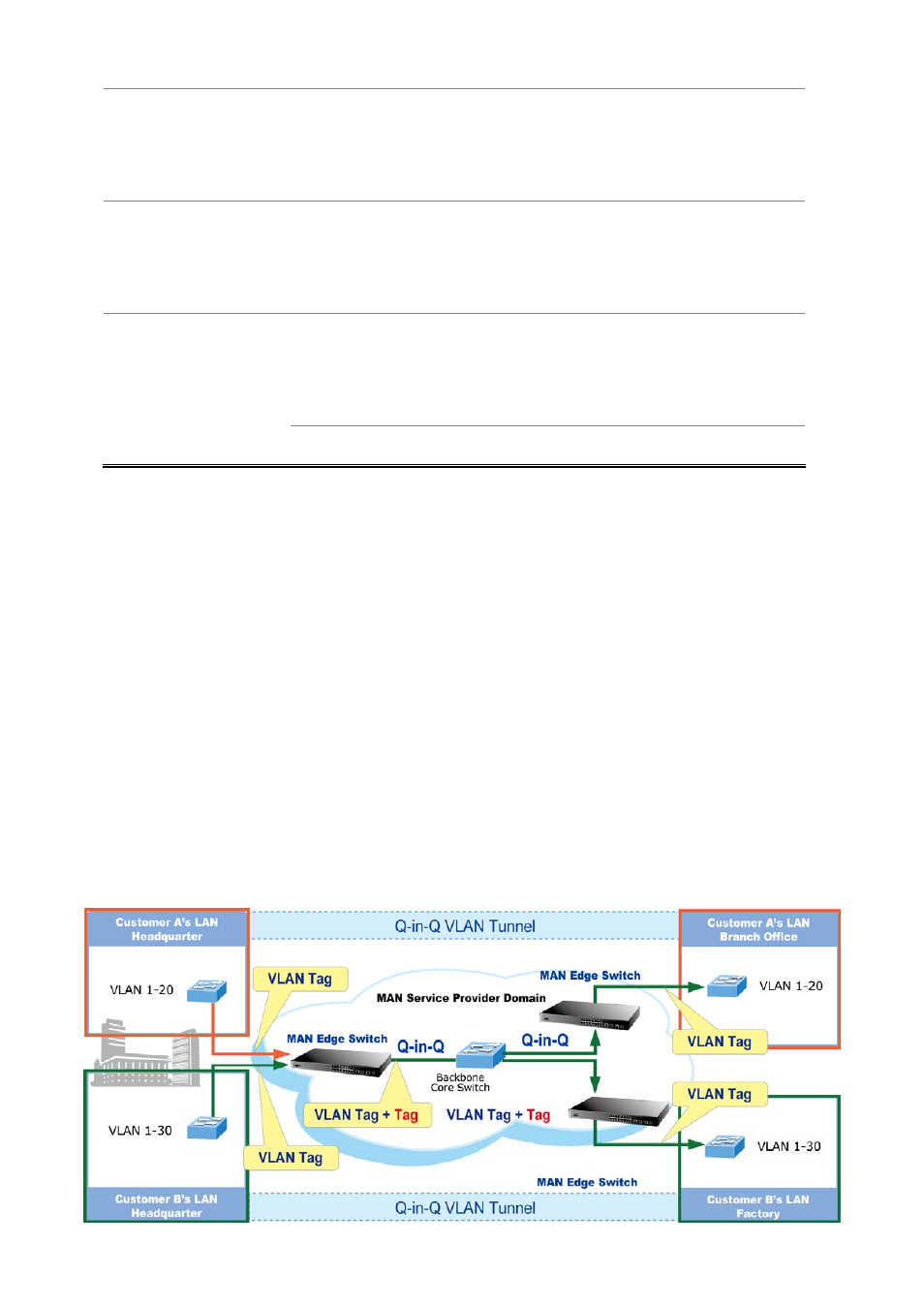5 q-in-q vlan – PLANET VC-2400MR48 User Manual
Page 82

User’s Manual of VC-820M / VC-2400MR Series
VLAN ID is 1.
The VLAN ID must as same as the VLAN ID that the port belong to VLAN group,
or the untagged traffic will be dropped.
Ingress Filtering 1
Ingress filtering lets frames belonging to a specific VLAN to be forwarded if the
port belongs to that VLAN.
Enable:
Forward only packets with VID matching this port's configured VID.
Disable:
Disable Ingress filter function.
Ingress Filtering 2
Drop untagged frame.
Disable:
Acceptable all Packet.
Enable:
Only packet with match VLAN ID can be permission to go through the
port.
Apply button
Press the button to save configurations.
4.4.5 Q-in-Q VLAN
■ IEEE 802.1Q Tunneling (Q-in-Q)
IEEE 802.1Q Tunneling (QinQ) is designed for service providers carrying traffic for multiple customers across their
networks. QinQ tunneling is used to maintain customer-specific VLAN and Layer 2 protocol configurations even when
different customers use the same internal VLAN IDs. This is accomplished by inserting Service Provider VLAN (SPVLAN)
tags into the customer’s frames when they enter the service provider’s network, and then stripping the tags when the
frames leave the network.
A service provider’s customers may have specific requirements for their internal VLAN IDs and number of VLANs supported.
VLAN ranges required by different customers in the same service-provider network might easily overlap, and traffic passing
through the infrastructure might be mixed. Assigning a unique range of VLAN IDs to each customer would restrict customer
configurations, require intensive processing of VLAN mapping tables, and could easily exceed the maximum VLAN limit of
4096.
82